As parents, we always strive to ensure the well-being of our children. One crucial aspect of their health is their vision. However, determining whether our children are experiencing visual difficulty with their eyesight can be challenging, as they may not readily express their concerns or even recognize that there is a problem. In this blog, we will discuss some signs that may indicate your child is struggling to see, and why regular eye exams are essential for their overall visual health.
Recognizing Signs of Visual Difficulty
Children, especially at a young age, may compensate for their visual difficulties by adjusting their behavior or simply not knowing any different. This can make it harder for parents to identify potential vision problems. However, certain signs may suggest your child is struggling to see clearly. Here are a few indicators to look out for:
Excessive squinting: If your child frequently squints, especially when focusing on distant objects or reading, it may indicate that they are attempting to compensate for blurry or unclear vision.
Sitting or moving close to screens or books: Children with visual difficulties might instinctively move closer to screens, books, or other objects to see them better. If you notice your child getting unusually close, it might be a sign that they are having trouble seeing from a normal distance.
Frequent eye rubbing: Constantly rubbing the eyes can be a sign of eye strain or fatigue, which may suggest the need for an eye evaluation.
While these signs can be indicative of potential vision issues, it is important to note that they are not definitive proof. Consulting an eye doctor for a thorough examination will provide a more accurate assessment of your child’s visual health.
The Importance of Regular Eye Exams
Even if your child does not exhibit any apparent signs of visual difficulties, routine comprehensive eye exams are highly recommended. These exams can detect underlying vision problems that may not be obvious to parents or children themselves. The American Optometric Association recommends that children undergo their first comprehensive eye exam before the age of six months, with follow-up exams at age three and before starting school. After that, yearly exams are generally recommended.
Regular eye exams in childhood ensure that any potential vision problems are identified early on. Timely detection and intervention can significantly improve your child’s visual development and educational outcomes.
What to Expect During a Pediatric Eye Exam
Pediatric eye exams differ from adult exams because they are tailored to the specific needs of children. During the exam, the eye doctor will evaluate your child’s visual acuity, eye movement control, depth perception, and eye coordination. They may also check for other conditions like amblyopia (lazy eye), strabismus (misaligned eyes), or focusing problems.
The eye doctor will use child-friendly techniques and equipment to make the exam more comfortable and engaging for your child. They will also take into consideration the child’s age and level of understanding to ensure a positive and reassuring experience.
Taking Action for Healthy Vision
If you observe any signs that may suggest your child is struggling to see, it is crucial to schedule an appointment with an eye doctor for a comprehensive evaluation. Even in the absence of noticeable signs, regular eye exams should still be a priority to monitor your child’s visual health and address any potential issues proactively.
Remember, healthy eyesight plays a vital role in your child’s overall development and academic performance. By staying vigilant, seeking professional care, and scheduling regular eye exams, you can help ensure that your child enjoys a clear and comfortable vision for a bright and successful future.


0 Comments